
The day-to-day demands of handling cases, satisfying clients, and earning a living make it difficult for lawyers to find time to step back to take a broader view of the legal profession.
Such is the purpose of "What's Hot and What's Not in the Legal Profession," the latest annual report (released in December 2012) by Robert Denney Associates Inc., a nationwide consulting firm based in Wayne, Pa.
The report, printed elsewhere in this issue of Wisconsin Lawyer, draws on insights gained from the company's strategic planning and consulting work with numerous law firms across the country, as well as from other leaders in the legal profession. "We also interview firms' clients, past and present," says Robert Denney, president, "to learn about the issues they see as important over the next two or three years."
What does the report mean for Wisconsin attorneys? Use it as a 30,000-foot view of key trends evolving in the legal profession, suggests Nerino Petro, practice management advisor at the State Bar of Wisconsin. "Trends tend to start in the major business centers on the coasts," Petro says, "and then work their way to us in the center" of the country.
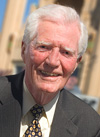 Robert Denney, Robert Denney Associates, Wayne, Pa: If clients say your fees are too high, they're really saying they're not getting enough for the money.
Robert Denney, Robert Denney Associates, Wayne, Pa: If clients say your fees are too high, they're really saying they're not getting enough for the money.
Trends in Practice Areas
Practice areas can become entrenched in a law firm, even if they are no longer worth the time and effort, Denney observes. His report cites practice areas meriting primary attention in the next couple of years.
"That doesn't mean every firm should practice in every one of those areas," he adds. "But if you already have an area as part of your practice, you should put your chips on it. If you're thinking of expanding into other areas or specific industries, then we hope to give you a target to think about."
Some of Denney's red hot or hot practice areas, presented along with some Wisconsin perspectives, include the following:
Energy
Energy issues fill the workdays of staff attorneys at the Wisconsin Public Service Commission (PSC). With energy-related project applications pouring in, "I surmise we're keeping a lot of private practice lawyers busy, as well," says Cynthia Smith, PSC chief legal counsel.
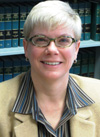 Cynthia Smith, Public Service Commission, Madison: Energy-related project applications are pouring in.
Cynthia Smith, Public Service Commission, Madison: Energy-related project applications are pouring in.
These days, a significant portion of those applications center on changes utilities must make to comply with state and federal environmental regulations, including those already in place or expected to be in the near future.
"We see the link between environment and energy in a lot of what our lawyers are working on here," Smith says. "The attorneys who appear before us also are well versed in both fields. So I think many private practice lawyers are diversifying their practices and getting skilled in both areas."
Health Care
Economics and legislative changes are major drivers affecting health care law practice today, says Alyce Katayama of Quarles & Brady LLP, Milwaukee. "It starts with the Affordable Care Act and the changes it's incentivizing, such as the development of accountable care organizations, or ACOs," she says. "That was already happening in the private sector, but the pace of change is accelerating."
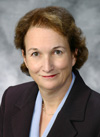 Alyce Katayama, Quarles & Brady, Milwaukee: Health care lawyers are expecting an onslaught of new regulations now that the presidential election is over.
Alyce Katayama, Quarles & Brady, Milwaukee: Health care lawyers are expecting an onslaught of new regulations now that the presidential election is over.
Attorneys in health care law are expecting an onslaught of new regulations now that the presidential election is over. Agencies have been sitting on regulations for months, Katayama notes, but now regulations are starting to emerge. "And when we get major sets of regulations," she says, "it generally creates lots of work for attorneys who are helping their clients."
Health care will be a critical concern for corporate counsel, says Atheneé Lucas, an attorney at ManpowerGroup, Milwaukee, and president of the Wisconsin Chapter of the Association of Corporate Counsel. "We have to work with our company's benefits area and our outside lawyers," she says, "to figure out exactly what we need to do and when we need to do it to be compliant."
Sidebar: Marketing and Building Your Wisconsin Practice
Wisconsin Lawyer asked three regional sources to weigh in on the marketing and business development trends and strategies Wisconsin attorneys need to watch today.
Read more
Labor and Employment
Health care is also on the radar of small-business owners and the attorneys who counsel them, notes Heidi Eglash, who owns a three-lawyer firm in La Crosse. What's more, small-business clients need advice about employee rights in general, she adds.
"As the job market has become more challenging, employees are more observant of their rights in order to protect themselves financially," Eglash says. "So businesses are more concerned about what they need to do to be in compliance."
Social media issues are another top concern for employers, Lucas says. Social media evoke two main questions in the workplace: How can an employer regulate employees' use of social media, such as Facebook and Twitter, while at work? And how ought an employer properly use individuals' social media pages to learn more about them as potential hirees?
Besides asking for advice on social media policies, Lucas predicts businesses will need counsel on noncompete agreements limiting employees' ability to quit to go to work for a competitor. "I've been reading that a certain percentage of employees plan to jump ship when the economy improves," she says. "So as the economy starts to rebound, noncompete issues will heat up."
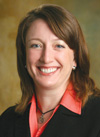 Heidi Eglash, Law Office of Heidi M. Eglash, La Crosse: Employees are more observant of their rights, to protect themselves financially, so businesses are concerned about what they need to do to be in compliance.
Heidi Eglash, Law Office of Heidi M. Eglash, La Crosse: Employees are more observant of their rights, to protect themselves financially, so businesses are concerned about what they need to do to be in compliance.
Intellectual Property
In his report, Denney notes that the America Invents Act of 2011 – which converted the U.S. patent system from "first to invent" to "first to file" – has stirred activity in the intellectual property law arena. "The law changes patent practice in this country to align with procedures in the rest of the world," says Elisabeth Townsend Bridge of Whyte Hirschboeck Dudek S.C., Milwaukee, and chair of the State Bar's Intellectual Property Section and International Practice Section.
As a result, Wisconsin's intellectual property attorneys will see plenty of work at least for the next couple of years, she predicts. That ought to be the case for attorneys in multiple settings, from intellectual property divisions of large firms to small boutique intellectual property firms.
Bridge also sees strong activity in trademarks. As more companies do business overseas they need to protect their trademarks against abuse in other countries. "It used to be that just the big companies did international filings," she says. "But now I'm seeing even small mom-and-pop companies that are broadening their market base and need trademark protections in foreign jurisdictions."
Proper Pricing of Services is Critical
Much to Denney's surprise, some firms raised their rates in 2012, and reports indicate some intend to raise them again in 2013. Denney thinks that's a mistake. Another practice he questions is informing a client that your firm's rates are going up, but that you'll give the client a discount. "That hurts your credibility," he says.
 Elisabeth Townsend Bridge, Whyte Hirschboek Dudek, Milwaukee: Wisconsin's intellectual property attorneys will see plenty of work for the next couple of years.
Elisabeth Townsend Bridge, Whyte Hirschboek Dudek, Milwaukee: Wisconsin's intellectual property attorneys will see plenty of work for the next couple of years.
Now more than ever, clients are looking for value, Denney says. "Clients might say your fees are too high," he notes, "but what they're really saying is they're not getting enough out of you for the money."
The solution he sees more firms turning to is to scrutinize their pricing structure, by asking: What does it cost the firm to handle a particular type of legal matter? Can the firm price that particular service high enough to make a profit? Some BigLaw firms, Denney reports, are even creating a position called "pricing director," who helps determine actual costs and the best price to quote to clients.
Michael Moore of Moore's Law, a Milwaukee-based lawyer coaching firm, agrees with Denney's observations on both points above: Now is not the time for lawyers to raise rates, and they need to get a better fix on their pricing.
"Clients are very perceptive now," he says. "Lawyers need to be able to explain why their prices are what they are and what kind of value the client is getting at that price."
Thus, like Denney, he sees more firms closely examining the pricing of their services, a process he calls "matter-cost budgeting." It abandons the hourly-billing-rate-times-hours-worked formula and instead gets to the true cost of handling a legal matter – for example, the cost to prepare a complaint, file it, follow up, and so on.
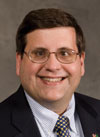 Nerino Petro Jr., State Bar practice management advisor, Madison: The billable hour is not dead, but alternative fee agreements are becoming critical for both lawyers and clients.
Nerino Petro Jr., State Bar practice management advisor, Madison: The billable hour is not dead, but alternative fee agreements are becoming critical for both lawyers and clients.
"If firms discover what a matter really costs them, they can start to get a better handle on which activities are profitable and which are not," Moore says.
Still, the billable hour is not dead, says the State Bar's Petro, and probably won't be for some time. But he feels it's becoming more critical for lawyers to devise alternative fee agreements, of benefit to both lawyers and clients. The lawyer will have solid revenue projections, and the client enjoys cost containment. Says Petro, "I think lawyers who get out in front of that trend and stay there will do better in the next 12 to 24 months."
Bringing in Business Expertise, Outside Capital
Denney sees a growing trend among large firms to hire a nonlawyer to be the firm's CEO or manager. This person, coming from a business background, tends to the day-to-day business side of the firm, and may make final decisions on major firm initiatives, such as launching a new practice area or opening a new office.
One Cleveland firm has an executive bearing the title of chief marketing officer, who even helps with hiring lawyers. She and her staff recruit, screen, participate in interviews, verify credentials, and make hiring recommendations. "She drives the process," Denney says, "which in the past a nonlawyer never would have done."
While large firms increasingly see hiring business expertise on staff as a smart move, small Wisconsin firms, of course, don't have that option. Still, now and going forward, "they need business acumen and help," Denney says.
Another trend Denney sees taking shape is nonlawyer investment in law firms. Many firms are undercapitalized, he says, and some are turning to outside investors to raise needed capital.
The issue is whether nonlawyer investors might try to influence how a law firm tries its cases or decides which clients to take. The debate "has really heated up in the last year," Denney says, "although I've been watching it for four or five years."
He notes some medical practices have outside investors, and no conflicts have surfaced related to investors telling doctors how to practice. Also, law firms in Australia and the United Kingdom have brought in outside investors with no problems. "It all depends," Denney says, "on the common sense and ethical sensitivity of the investor."
The Generation Gap and Succession
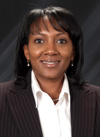 Atheneé Lucas, ManpowerGroup, Milwaukee: Employee noncompete issues will heat up as the economy rebounds.
Atheneé Lucas, ManpowerGroup, Milwaukee: Employee noncompete issues will heat up as the economy rebounds.
Law firms are continuing to reduce hiring of first-year associates, Denney observes. At the same time, many firms are dropping mandatory retirement policies, as senior partners either want or need to keep practicing. These two trends will affect future management and succession for client responsibility in law firms.
Moore already sees this playing out in the firms for which he consults, in Wisconsin and elsewhere. "Firms are wrestling with the issue of how senior partners gracefully wind down their practice and hand it off to the next generation," he says.
He sees succession planning as an issue that must be "brought to the forefront" across firms of all sizes. Succession planning must cover both leadership transitions within the firm itself and, just as important, client-relationship transitions. Moore stresses that peer-to-peer identity often drives client relationships, and now those peer-to-peer relationships between attorneys and their clients are shifting.
"The second or third generation of clients may not know your firm," Moore says, "but they do know other lawyers or have buddies who do. They may leave you for another firm. So the generational issue plays out both internally and externally. That's why it's so important."
Dianne Molvig is a frequent contributor to area and national publications.
We’re having technical problems with the Add a Comment feature at the moment. While we work on the problem, please submit your comments about this article or feedback to the Wisconsin Lawyer editors to wislawmag@wisbar.org. Thank you.
Sidebar: Marketing and Building Your Wisconsin Practice
Wisconsin Lawyer asked three regional sources to weigh in on the marketing and business development trends and strategies Wisconsin attorneys need to watch today.
Weathering the 'Perfect Storm'
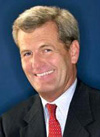 Michael Moore, Moore's Law, Milwaukee: The economy, Internet, and client emphasis on value combine for a perfect storm of hyper-competitiveness in the legal profession.
Michael Moore, Moore's Law, Milwaukee: The economy, Internet, and client emphasis on value combine for a perfect storm of hyper-competitiveness in the legal profession.
Combine the impact of the economy, the burgeoning number of Internet-based legal services, and clients' growing emphasis on value returned for what they spend, and you have "the perfect storm for hyper-competitiveness in the legal profession," says Michael Moore of Moore's Law, a Milwaukee-based lawyer coaching firm.
To thrive in that environment, consider two key marketing and business development strategies, Moore advises. First, devise a pricing value model, which he discusses in the accompanying main article, and second, focus on building relationships with clients and potential clients.
One technique Moore uses in working with law firms is to analyze their books to determine client drivers. "Frequently, those are your referral sources," he says. "So I ask lawyers, 'How much time do you spend with your referral sources?'"
He notes that an attorney usually has 15 to 20 key referral sources, and sustaining those relationships is difficult for busy lawyers. The trick, he says, is to integrate that into your routine.
"Have your assistant set up on your calendar an active series of breakfasts, lunches, or whatever with a referral source at least twice a month," Moore says. "I've seen that produce results."
Breakfast and Blogs
 Roy S. Ginsburg, Minneapolis/St. Paul, Minn.: You can't afford not to have a professional-looking website.
Roy S. Ginsburg, Minneapolis/St. Paul, Minn.: You can't afford not to have a professional-looking website.
Minneapolis/St. Paul-based lawyer coach Roy S. Ginsburg advises attorneys to spend the bulk of their marketing and business development dollars in two areas: the budget for breakfasts and lunches with clients and prospective clients, and a website.
"I don't care if you're practicing in Rice Lake or Milwaukee," he says. "In this day and age you can't afford not to have a professional-looking website."
As for social media, Ginsburg says the social media channel still used most by lawyers is blogging. It's another avenue, he notes, for lawyers to write about legal topics to build their professional reputation.
Ginsburg believes social media such as Facebook and Twitter are too personal to be of much use for law firms. That may change, he adds, as the generation that grew up using these media since childhood produces lawyers and clients. By then, however, new forms of social media may well have replaced today's.
"I tell lawyers that if you enjoy using social media in your practice and do so effectively, then go for it," Ginsburg says. "But I don't think it's reached the point such that if you're not on social media, your whole marketing plan is washed up."
The Next Wave
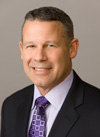 Steven Wingert, Association of Legal Administrators: Find your clients' pain points and needs. Then you can decide how to serve that client.
Steven Wingert, Association of Legal Administrators: Find your clients' pain points and needs. Then you can decide how to serve that client.
In today's competitive environment, law firms are realizing they must be more proactive with their clients, observes Steven Wingert, president of the nationwide Association of Legal Administrators, past president of the Wisconsin Association of Legal Administrators, and executive director at Chicago-based Marshall, Gerstein & Borun LLP. "I think this trend is the next wave of client development," he says.
Being proactive entails communicating with clients to learn about their business and understand their strategies. "Find out their needs and pain points," Wingert advises. "Then you can decide how to service that client. You're trying to stay a step ahead, as opposed to waiting for a phone call."
In Wingert's view, business development is becoming a more interactive process between firms and clients. Everyone in the firm who crosses paths with the client ought to be involved: associates, accountants, paralegals, administrators, and so on. For instance, if a billing issue arises, your firm's administrators could deal directly with the client's administrators to resolve it.
"There's a lot of opportunity to build on client relationships, not just on the legal side, but also on the administrative side," Wingert says. "This is a new concept in terms of how law firms work with and communicate with their clients."
